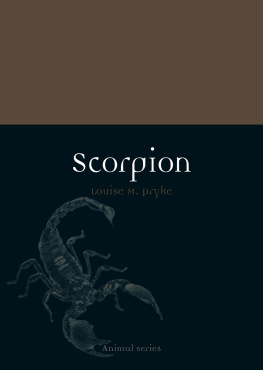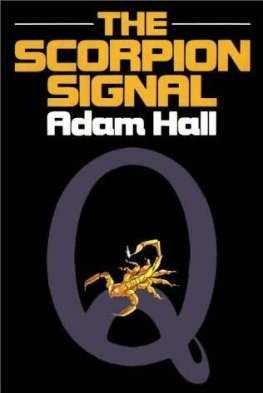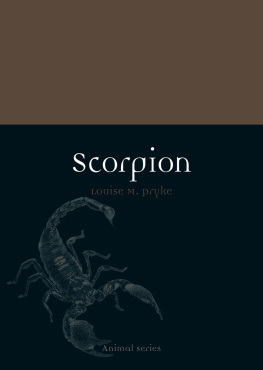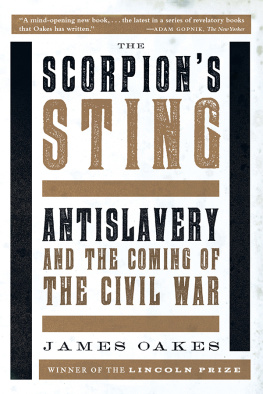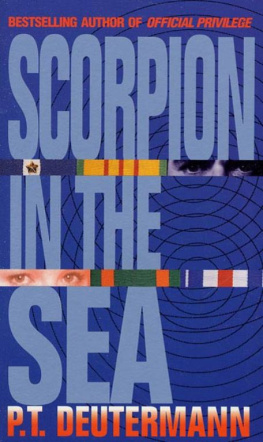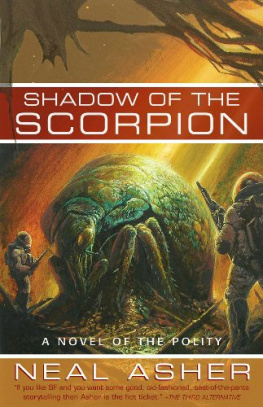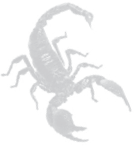Black scorpion.
Introduction: Shining a Light on Scorpions
Since ancient times, scorpions have captured the imagination of humans. While scorpions and humans have coexisted for thousands of years, the image of the scorpion retains a sense of mystery and danger. In art, media and myth, the small yet distinctively statured scorpion is often depicted as having a ferocious and uncompromising nature. The Carthaginian author Tertullian (c. 160225 CE) provided this description:
So this is the scorpion, its row of knots forming a delicate, poisonous vein imbued with venom on the inside, rising up in a curved assault, it draws its barbed spear to its full height, in the manner of a war machine.
Tertullian gives this account while explaining how the Roman catapult, Scorpion, received its name. The Scorpion was a piece of Roman artillery that could be operated by one person, yielding a powerfully destructive result over a range as great as 400 m (1,300 ft). The Scorpion catapults imposing sizetoimpact ratio gives an insight into the perception of its namesake animal. Yet, despite the scorpions hostile reputation, most are not aggressive. They are generally nocturnal by nature, so the scorpion hides in burrows and crevices during the day, staying away from the light. Black scorpion.
Scorpions are exceptional and diverse creatures. One of their most impressive aspects is the ability to adapt to changing habitats. Recent studies have discovered that some species of scorpion can survive even under extreme environmental conditions. Their toughness is legendary scorpions have been shown to be able to survive freezing temperatures and submersion in water for up to two days. In drier habitats, some have been known to last for twelve months without food. Further, they are known to be one of the few creatures able to withstand ionizing radiation at nuclear test sites. In many ways, these small arthropods can be considered to be super-adapters, surviving for hundreds of millions of years with very few changes to their form, and populating every continent with the exception of Antarctica.
The relationship between humans and scorpions has been a complicated one since the earliest records, perhaps unsurprisingly given the wide territorial spread of both species. While less than 1 per cent of known scorpion species have venom capable of killing humans, the hazardous aspect of the scorpion dominates its image. Scorpions inspire fear and fascination in inverse proportion to their diminutive size. This is not without reason even in modern times, scorpion stings are a genuine public health issue in many underdeveloped tropical and subtropical countries. More than 1.2 million people per year are estimated to be stung by scorpions, resulting in over 3,000 deaths. In recent times, the perilous relationship between humans and scorpions has intensified for the scorpion, with several species in danger of extinction.
The focus of this book is the relationship between humans and scorpions, from ancient times to the modern world. While scorpions are often depicted fearsomely, there is a great diversity of human reactions to scorpions in various cultures and at different times in history. Scorpions have held revered roles in religious cult and ritual, and are frequently depicted as playing a protective role for people, gods or the natural environment. It seems fitting that this survivor from prehistoric times is featured in some of our most ancient works of myth and literature. Images of scorpions appear in some of the worlds oldest written records, including cave paintings. A hybrid creature, part human and part scorpion, plays a guardians role in the worlds oldest literary epic, the Mesopotamian Epic ofGilgamesh. Scorpion imagery appears in artistic works as diverse as Shakespeares tragedy Macbeth and the video game franchise Mortal Kombat. From ancient Egypt to modern films, the scorpion can be seen to have lasting links to kingship in human thought. The scorpions habit of carrying its young on its back is likely to be the cause of the animals perceived link to motherhood although the mother scorpions occasional behaviour of eating its young makes this connection a little surprising!

